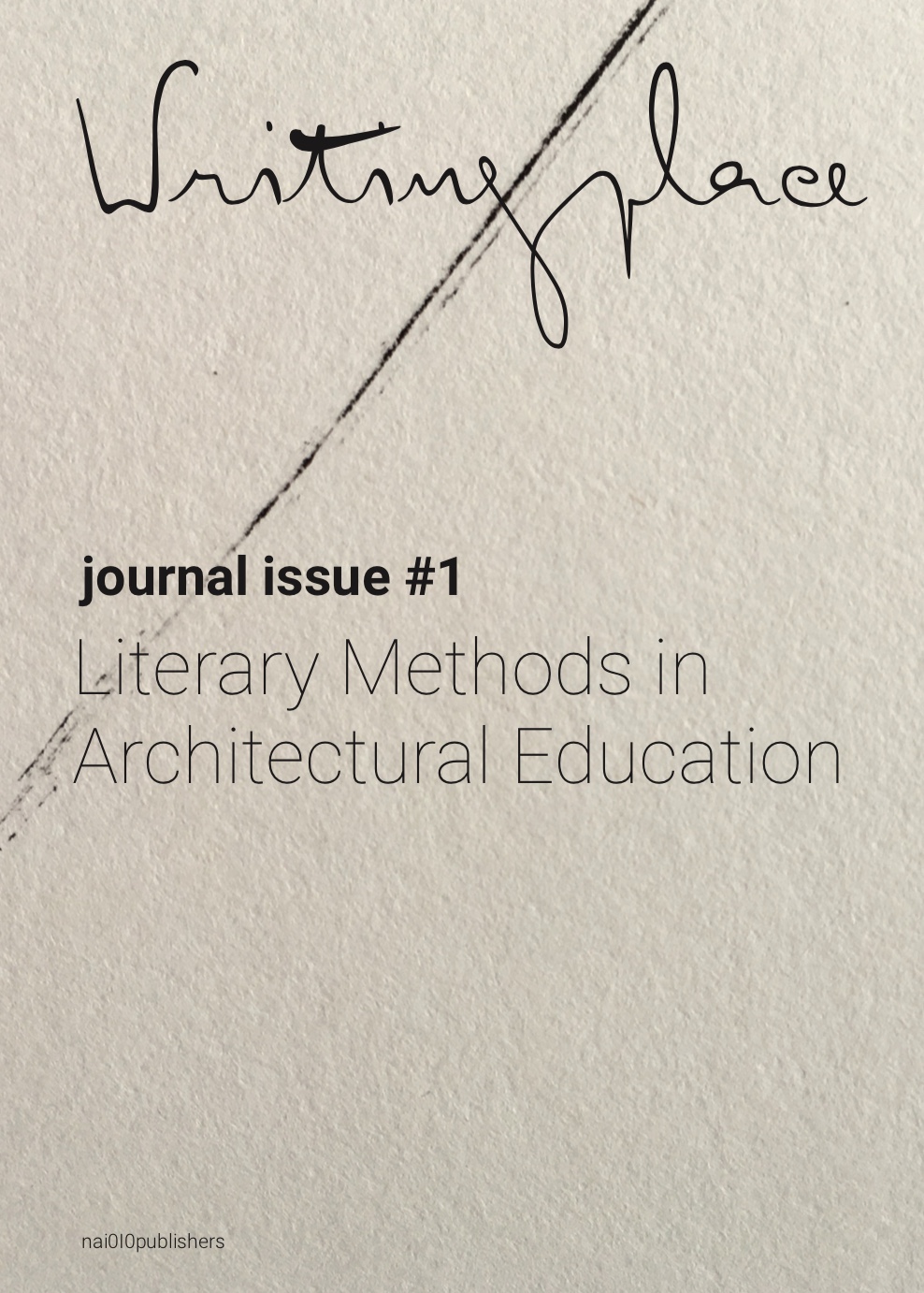The Word-Collector: Urban Narratives and ‘Word-Designs’
DOI:
https://doi.org/10.7480/writingplace.1.2073Abstract
Engaging the example of “The Word-Collector” project – an experimental design studio taught recently in the Post Professional Masters, School of Architecture, McGill University – this paper discusses a literary approach in architectural design; one that explores the possibilities of written language as a tool of architectural representation. The paper presents the theoretical background of the approach discussing the importance of language for architecture, explains the project’s specific stages, documents selected outcomes, and concludes by elaborating on the implications of the suggested pedagogy for architectural education nowadays.
This linguistic architectural design process developed in three stages. Through their word-collections and the related narratives, the students engaged in a unique understanding of the city. Deliberately framing perception and forcing a personal, emotional engagement, the city revealed deeper inter-subjective meanings. Through the different forms and modes of writing, engaged during the project’s second part, the students attempted to envision an appropriate architectural space responding to both the city and the program. Lastly, oral language and narrative forms became a way to speak about the experience in the imagined new places on behalf of its potential future users. The ‘Word-Collector’ put forward a ‘theoretical project,’ a fully autonomous architectural design vision constructed solely of words.
References
Lance Blomgren, Walkups (Montreal: Conundrum Press, 2009)
Michel de Certeau, The Practice of Everyday Life (Berkeley: University of California Press, 1984)
Nick Crossley, The Social Body: Habit, Identity and Desire (London: SAGE, 2001)
Nicolas Dickner, Nikolski, a Novel (Toronto: Knopf, 2008)
Vilem Flusser, Does Writing Have a Future?, Nancy Ann Roth (transl.) (Minneapolis: University of Minnesota Press, 2001)
Richard Kearney, The Wake of Imagination (Minneapolis: University of Minnesota Press, 1988)
Sonya Kohut, ‘Word-design’ (Montreal: McGill University, April 2013)
David Michael Levin, The Opening of Vision: Nihilism and the Postmodern Situation (London: Routledge, 1988)
Walter Ong, Orality and Literacy: The Technologizing of the Word (London: Routledge, 1988)
Juhani Pallasmaa, Encounters, Peter MacKeith (ed.) (Helsinki: Rakennustieto Oy, 2005)
Alberto Pérez-Gómez and Louise Pelletier, Architectural Representation and the Perspective Hinge (Cambridge, MA: MIT Press, 1997)
Paul Ricoeur, The Rule of Metaphor: Multi-Disciplinary Studies of the Creation of Meaning in Language, Robert Czerny (transl.) (Toronto: University of Toronto Press, 1977)
Paul Ricoeur, ‘The Function of Fiction in Shaping Reality’, Man and World, vol. 12, no. 2 (1979)
Elaine Scarry, Dreaming by the Book (Princeton: Princeton University Press, 2001)


